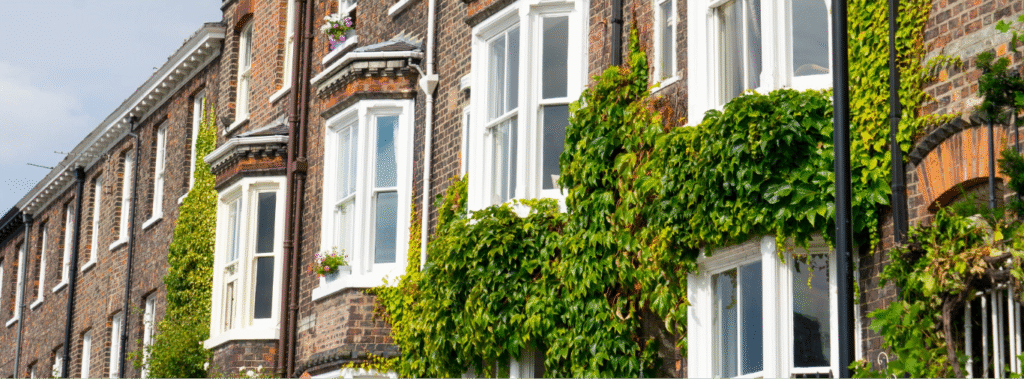Just Leave It to Us
Our comprehensive, expert service helps you save time and money on commercial mortgages.

On this page you’ll find everything you need to know about let to buy and let to buy mortgages. We’ll walk you through how it all works, the process you go through and more.
Fill out this form and we’ll contact you to book a free call with one of our mortgage experts.
"*" indicates required fields
If you have a default, you might worry about how this will affect your ability to get approved for a mortgage.
It can be worrying to think that your mortgage application could get declined. The good news is, it isn’t impossible to get a mortgage even if you have one or multiple defaults on your credit record. However, even one default will still affect your credit score and the deals available to you.
Let to buy is a scenario rather than an actual mortgage product. It’s where you remortgage your existing home onto a buy-to-let basis, often releasing additional equity from it at the same time which you can then use as a deposit on a new home. The buy-to-let mortgage in this specific scenario is often referred to as a let to buy mortgage.
A let to buy mortgage, sometimes called a rent to buy mortgage, gives you a lot of flexibility when you want to buy a new home.
Firstly, it can help you avoid missing out on the new home you want to buy by simplifying your part in the property chain. If you don’t have to sell your existing property and wait for a buyer, then you’ll be able to go ahead with the purchase much more quickly, making the process much less stressful.
Secondly, you can still release equity from your existing property to put towards a deposit on a new home.
Thirdly, if your old property is in an area with high rental prices, you could also find it a very financially sound investment to take on both properties with mortgages. It can also form a solid part of your property portfolio.
In a let to buy scenario, you take out 2 mortgages: a buy-to-let remortgage on your existing property and a residential mortgage on your new home.
You remortgage your existing property onto a buy-to-let basis so that you’ll be able to rent it out to tenants. It’s common to release additional equity from your property by remortgaging for an amount greater than your current outstanding mortgage balance. You can then use this money – along with any savings – as a deposit on your new home.
The affordability checks for your buy-to-let mortgage will be based on the expected rental income of the property. The affordability checks for the mortgage on the new home will be based on your personal income. This means you’ll need to meet the affordability criteria for both mortgages.
The residential moving house mortgage on the new property is pretty straightforward. The lender assesses your income to work out how much you can borrow. The main difference is that they also have to consider how your buy-to-let remortgage will affect your cash flow when calculating what you can afford. Nonetheless, since the buy-to-let remortgage should be covered by the proposed rental income, it will almost certainly be excluded by the lender in the underwriting process for the residential mortgage application.
We explain more about releasing equity from your home to buy another in our Ask the Mortgage Experts.
As mentioned above, the mortgage on your old home will be a standard buy-to-let loan. There is no difference between the actual mortgage product that you take out and the typical buy-to-let mortgage you would get on a new rental property purchase. Let to buy mortgage is simply the term used for this type of setup, where you aim to rent out your old home and often release equity from it, buying your new home in the process.
A standard buy-to-let mortgage is usually taken out when you want to purchase a property with the specific intention of renting it out, and with let to buy, you’re simply refinancing your previous home onto a buy-to-let basis via a buy-to-let mortgage.
You’re not typically allowed to rent out a home that has a standard residential mortgage on it. In order to rent out such a property without remortgaging it onto a buy-to-let basis, you would need to get consent to let from your existing mortgage lender.
Consent to let is where your existing mortgage lender allows you to rent out your property while you still have your current mortgage on it. Not all lenders will grant consent to let, and whether it’s an option for you will depend on your situation. Consent to let is typically granted for a period of time such as 6 – 12 months, and will often be under the condition that you intend to move back into the property at the end of this period or sell it.
Talk to Our Experts Today
As you would typically take out a buy-to-let remortgage and a residential mortgage in this scenario, it’s important to look at both types of mortgages.
You can use our free best buy tools to compare the best buy-to-let remortgages and residential mortgage rates currently on the market. They’ll give you an idea of the kinds of mortgage deals and rates that will be available to you.
When timing is critical, bridging loans provide fast, flexible funding to bridge gaps between transactions or support short-term goals. Whether buying before selling, starting a project, or seizing an opportunity, this solution gives you the financial freedom to act quickly. With improving rates and John Charcol’s expert guidance, we’ll help you make confident decisions and turn challenges into opportunities. Start 2025 ready to move forward with a bridging loan tailored to your needs.

UK Mortgage and Property Expert
Life insurance protects you, your family and your home, including if you’re unable to meet your financial obligations due to illness, accident or even death. Get a quote now.
If you’re purchasing a property, you’ll need a conveyancer. Luckily, John Charcol can refer you to an experienced conveyancer that suits your budget and timeline.
When you phone us, you can either arrange a phone appointment with your adviser or a face-to-face meeting – whatever suits you. Your adviser will ask you some questions then go away and find you the best 2 mortgages for your circumstances and future needs. They’ll organise a follow up during which they’ll present you with what they’ve found.
Once you’re happy with both their recommendations, they’ll go about securing both your DIPs (Decision in Principles). A DIP is basically a promise from the lender that they’ll loan you money on the condition that the information you’ve provided is correct and subject to a valuation of the property.
After you’ve received your DIPs, you’ll be in a position to move forward with remortgaging your existing property and making make an offer on the new property.
After the seller of the new property has accepted your offer, you’ll be assigned a client relationship manager who’ll proceed with both full mortgage applications. Your client relationship manager will send you some information which explains all the documents the lenders require. They’ll then check and submit certified copies of your documents, liaising with you and both lenders. Your mortgage adviser will submit both fully packaged mortgage applications.
We always aim to submit any mortgage applications as quickly as possible. This may mean that your applications are submitted at different times if you’re waiting for the seller to accept your offer on the new property.
If the lenders are happy with everything they’ve found, they’ll each send you a mortgage offer. They’ll also send us a copy.
If the lender is happy with everything they’ve found, they’ll send you a mortgage offer. They’ll also send us a copy.
After you’ve accepted your mortgage offers, you’ll go through the legal part of the process, known as conveyancing. This is where the solicitors/conveyancers draw up contracts and organise the actual, legal purchase of the property or the remortgage. You’ll need to inform your buildings insurance provider for your existing property that you’ll be renting the property out and arrange buildings insurance for the purchase property at this stage.
Your solicitor will still be able to proceed with the buy-to-let remortgage if you’re waiting for the residential mortgage offer for the property you’re buying, but they won’t be able to proceed with the residential mortgage offer to exchange of contracts if you’re still waiting for the buy-to-let remortgage offer. The buy-to-let remortgage must be in place before the residential mortgage can complete.
For the buy-to-let remortgage, your conveyancer/solicitor will set a date to draw down the funds and pay off any existing lender(s) once the mortgage offer’s released. The solicitor will then send the surplus funds you’re using as a deposit on your new home to you, which you’ll pass onto the solicitor handling the purchase along with any savings you’re using. The purchase solicitor will then exchange contracts with the seller’s solicitor and the purchase will complete when the money is transferred on an agreed-upon date.
Use our buy-to-let mortgage calculator and residential mortgage calculator to work out how much you can borrow on each mortgage.
Here’s how an expert mortgage broker like John Charcol can help you:
You can take out a buy-to-let mortgage up to 75% LTV (loan-to-value) when remortgaging your existing property onto a buy-to-let basis. This is simply because that’s the standard maximum LTV for a buy-to-let.
The maximum LTV for the purchase mortgage – i.e. the one on your new home – would be subject to an affordability calculation on your monthly earned income. The typical maximum LTV for most residential mortgages in a let to buy scenario is 90%.
As you take out a buy-to-let remortgage and a residential mortgage when you let to buy, most lenders who already offer these mortgages will be able to assist you. The best lenders and products for you will depend on your situation and needs.
It’s worth noting that you don’t have to use the same lender for both mortgages. As a whole of market mortgage broker we have access to all kinds of products, making it easier for you to secure the deals that best suit your needs.
Stamp Duty for let to buy mortgages only needs to be considered for the new property you’re buying. You would pay normal Stamp Duty plus Additional Stamp Duty on the new property, even though it’ll be your new home. This is because it’s technically your second property.
You should be able to claim back the Additional Stamp Duty if you sell your original main residence within 3 years of completing the purchase of your new home.
The minimum deposit you’ll need for the buy-to-let remortgage is 25% and the minimum deposit you’ll normally have to put down for the residential mortgage is 10%, although most people in let to buy scenarios are able to put down a bigger deposit as they’ve usually built up more equity in their existing property. The bigger your deposit, the better the products you’ll have access to.
The buy-to-let and residential mortgage rates available in a let to buy scenario are typically the same as the rates available in a standalone buy-to-let remortgage or residential purchase.
However, it’s worth noting that buy-to-let rates tends to be higher than residential mortgage rates.
Use our free tools to compare buy-to-let remortgage rates and residential mortgage rates.
Talk to Our Experts Today
